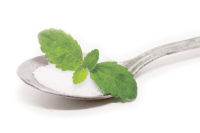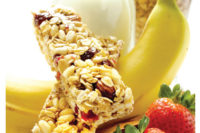Sugar and sweeteners may seem like they’re being under attack, with rising health concerns as well as the FDA’s proposal to include a separate “added sugars” line on nutrition facts labels. But not all sweeteners are created equal.
Yet, is it a matter of choosing between the lesser of a number of evils? Maybe not — companies are working to find or develop sweeteners that consumers can feel good about.
And both ingredient suppliers and food manufacturers have an incentive to take a deeper look at their sweetening ingredients that goes beyond appealing to the public now that government agencies are getting more involved in the food industry.
“As sugar continues to gain the attention of health professionals, authorities and consumers, the potential introduction of more regulations controlling sugary products is probable,” explains Laura Jones, global food science analyst for market intelligence agency Mintel. “In the event of any regulations being introduced that target sugary products, [low-sugar] products would enable manufacturers to circumvent these regulations.”
With non-sugar sweeteners, it’s out with the old and in with the new — the old being artificial and the new being natural.
Adverse health effects have ruined the reputations of artificial sweeteners, especially aspartame, even though the FDA still designates it as safe. So in a world that is becoming increasingly technologized, the future of sweeteners may take the opposite path and return to its roots with plant-based options.
Plant-based sweeteners were used in 28 percent of product launches between 2011 and 2013 — a new high. Stevia is one of the most popular and well-known natural sweeteners, the use of which in food and beverage products reached $110 million in 2013. Moreover, it’s projected to grow to $275 million by 2017, Mintel and Leatherhead Food Research estimate. Blends of stevia and other sweeteners, such as acesulfame K, are also growing.
For example, Steviva Ingredients, a global supplier of all-natural, high-intensity and custom sweeteners, recently announced the launch of MonkSweet plus — a natural sweetening solution that brings together optimal levels of proprietary stevia, monk fruit (lo han guo) and erythritol.
“MonkSweet plus answers the industry’s call for a great-tasting, low-calorie sweetener that can eliminate or reduce the need for added sugar in a variety of applications,” the company says. “The ingredient is twice as sweet as sugar and has just 0.2 calories per gram. It can be easily plugged into formulations at a1:2 ratio for sucrose or high fructose corn syrup to reduce calories and enhance flavor. It also meets health and dietary demands by carrying a GMO-free profile, kosher certification and a low glycemic load that’s safe for diabetics.”
The product was designed specifically for beverages, sauces, marinades, condiments, baked goods, jellies and confections,
“It is appropriate in a wide range of formulations because it works well with other sweeteners and is heat-, shelf- and pH- stable,” Steviva Ingredients says.
MonkSweet plus is a proprietary blend of three branded ingredients: SteviaSweet 95-60, monk fruit extract and Erysweet Erythritol. Together, they deliver a naturally sweet, minimal calorie solution with a similar mouthfeel to sugar.
Calorie-free SteviaSweet 95-60 delivers 250 times the sweetness of sucrose, while Erysweet Erythritol not only restores necessary bulk, which can often be lost when replacing sugar in a confection, but also tempers the sweetness of stevia and provides a mild cooling effect. The addition of monk fruit extract contributes additional sweetness and also acts as a natural flavor enhancer to mask the off-notes associated with stevia and other ingredients in a formulation.
The sweetness of the monk fruit, a relative newcomer to the market, is derived from a group of glycosides called mogrosides. Steviva Ingredients extracts mogroside V, the sweetest of these, from the pulp of the fruit via water extraction, a method that provides the cleanest flavor because it is free from residue and chemical solvents.
Cargill also has introduced a new natural sweetener, Zerose erythritol, a zero-calorie bulk sweetener, which has a clean sweet taste and unique cooling effect.
“Zerose erythritol has zero calories, a high digestive tolerance, a low glycemic response and won’t promote tooth decay,” Cargill says. “In fact, it offers a better level of tooth protection compared to other polyols on the market today.”
“Consumers have become more conscious of the amount of sugar they consume. Many also look for more natural sweetener options when selecting products,” says Cargill. “Confectionery product manufacturers have a lot of ingredient choices to consider when formulating reduced- and zero-calorie candies and other confectionery products. As always, taste is the top priority!”
Technology has played a role in adapting these sweeteners into products that will work best in confections.
“As the dental health benefits of Zerose erythritol become more widely known, we see an emerging market for gum and confectionery products positioned to oral health,” Cargill says.
The rise of natural sweeteners doesn’t mean an immediate death sentence for artificial sweeteners though.
“As manufacturers work to create the right taste profile for stevia and for other plant derived sweeteners, such as monk fruit, to obtain regulatory clearance, the artificial sweetener market still offers growth opportunities, in particular the sucralose and acesulfame-K markets,” says Emma Gubisch, who is the strategic insight manager at Leatherhead Food Research.
Of course, as much as everyone wants to find alternatives to sugar, it still remains the gold standard when you want to sweeten something. And, it’s impossible to have a conversation about sugar without at least mentioning the U.S. sugar program.
The U.S. sugar-program dates back to The Great Depression, and was originally set up to protect domestic sugar growers. It requires that about 85 percent of U.S. sugar be purchased from U.S. growers, which drives up the cost for the commodity, and by extension drives up costs for candy makers.
And those looking for reform instead saw the program take a step backward this year.
Specifically, the U.S. Department of Commerce has been working with the Mexican government and Mexican sugar exporters to suspend the antidumping and countervailing duty investigations of Mexican sugar imports.
So while in the past U.S. manufacturers have been able to get sugar from Mexico despite the strict U.S. sugar program because of the North American Free Trade Agreement, the new proposed agreement would restrict imports from the country.
In November the Sweeteners Users Association submitted comments to the U.S. Department of Commerce in opposing the draft suspension.
“Indeed, an analysis recently prepared by the Sweetener Users Association determines that the higher prices resulting from the domestic industry’s unfair trade cases have cost U.S. sugar consumers $837 million between April and October 2014,” the organization writes. “The draft suspension agreements being contemplated by the Department will ensure that U.S. consumers pay higher prices for sugar - not just for the seven months addressed in the SUA’s recent paper, but for a minimum of five years.”
It’s a sour note for an industry intent on sweetening the world.
— Crystal Lindell contributed to this report.







